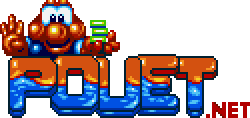AI cat
category: general [glöplog]
Just to be clear, my "VibeCoding" prod is just a story about Vibe Coding, it was actually 100% hand made and there's a link to the source code in the entry :)
@Dbug: Yeah, I've looked at it a bit, I got that it's more of a joke story :)
Was mostly curious if anyone already sneaked actual vibe code in their prods or didn't happen yet? Although copying some code-fragment that we all have done might not seem very different afterall.
Was mostly curious if anyone already sneaked actual vibe code in their prods or didn't happen yet? Although copying some code-fragment that we all have done might not seem very different afterall.
Quote:
Was mostly curious if anyone already sneaked actual vibe code in their prods or didn't happen yet?
Not official prod, but I was playing with is Gemini Canvas to do very short "demo". You can see it here: https://tactful-elk.static.domains/vibe-coding-demo (I shared in another thread already, this is slightly updated, if you saw older, press ctrl+f5).
Dislaimer: I do not endorse vibe-coding. I only did it to understand what is the current state of those tools and to be aware how to detect it (if possible) prods created with those tools.
I'm not sharing my full log, because I was using private account I would not want to share.
The initial prompt was:
>> Write me a short intro demoscene-style in JS/webgl with music generated in a shader and full screen quad shader rendering a rotating donut with flashy trippy colors
was far cry from the final result.
At some point I had to literally provide coordinates to some sdf objects to make it look better:
>> Please adjust crossbarDims to vec3(0.2, 0.08, 0.08) and increase AI letters oscillation amplitude from 1.2 to 1.8
So I'm not really sure if someone who doesn't know what he is doing would be able to use it ;)
What actually surprised me is the music created with webkit audio using real-time synthesizers. The bass line even has LFOs with resonance (now). The initial music was super generic with very even rhythm. But some additional prompting to add nice rhythmic variation helped. At some point I even prompted:
>> arpeggios should be slower a bit, and make the top notes more like "pum pum, pimpimpumpum pum"
And the tune improved, and it added "pim" and "pum" as comments to specific notes ;)
Overall, tbh the whole experiment took me longer than I would do it myself (with the same "quality"). But it's quite scary that it's not completely terrible. So I think party orgas should be prepared.
